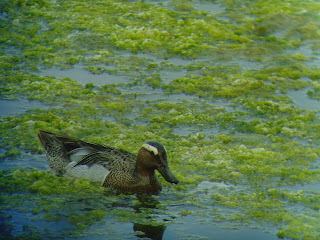As you guys all know April and May are the months to be out and about. Last year I wasn't out and about but this year things are much better.
Bolton at Easter was a brilliant family time and birding had to take a back seat, however I was able to squeeze in the odd twitch and a few walks. I finally got to Rochdale and the peregrine falcon was spotted on the town hall. Unfortunately they are not breeding there this year so it's a bit hit and miss. There is a web site with a camera trained on the nest but mostly it is empty as the falcons are breeding elsewhere in the town but occasionally the male pitches in and you might be lucky. They also have their own Facebook page.
https://www.rochdaletownhall.co.uk/conservation/falcons
https://www.facebook.com/groups/RochdaleFalcons
 |
| Rochdale town hall |
 |
| Phone shot I'm afraid, peregrine is sitting on the wee buttress down from the top. |
Elton Reservoir had singing willow warbler and a nice walk. We went to Formby beach to paddle and build sandcastles and got gannet offshore, and on the way home detoured to Marshside RSPB for common sandpiper and pink-footed goose. (I also managed to miss a little ringed plover and a spoonbill). A trip to Martin Mere only added a wheatear flying across the road. The reserve itself didn't offer a lot as you know from the previous post. We finally heard a tawny owl on the last night having missed it in February. I am also adding in carrion crow which was seen in February but escaped the list!Back home and the coastal path finally turned up sandwich tern but also a singing whitethroat. Not an annual event but it was nice to see one again. I also got a swallow one evening hunting over Main Street in Bangor having not seen one at all last year.
WOW had lots of interesting birds as the breeding season got underway. The Mediterranean gulls are back in force with at least 4 pairs and possibly five. The little gull was still there into its fifth week. The most interesting observation concerns the sandwich terns. Normally we see the odd one or two early in the season but they don't stay. This year we have had over 30 who look like they are settling to breed (displaying, pair bonding, mutual feeding and mating). This follows on from the 60+ we had roosting at the end of the summer in 2024. We think they have re-located from Cockle Island in Groomsport which has been tern free so far this year. High tides seem to have washed out the nests last year so we think the terns have voted with their wings and moved to WOW. Common and arctic terns have both arrived and we have had the full suite of sand martin, house martin, swallow and swift hunting overhead. The wooded areas are full of singing birds and I added willow warbler and blackcap in the trees behind Hide 2. Finally we also had a common sandpiper feeding in front of the window plus all the resident birds nesting.
A trip up to Glenwherry for cuckoo drew a blank but we came back via Capanagh Wood and the Starbog Road and bingo, cuckoo seen and heard. A tidy spring list and there is still three weeks to go.
 |
| Black-tailed godwits are colouring up nicely |
 |
| Shovelers are sleeping |
 |
| Mediterranean gulls on the platform |
 |
| Sandwich terns on the platform |
 |
| Nesting coot |
 |
| Common sandpiper |
The two shots of the nesting platform are screen shots taken from the camera on the platform as they are too far away for reasonable photographs. The camera is focused on a Mediterranean gull nest and it is giving good views of the pair. Hopefully the sandwich terns will breed as well.2025
110: Little gull
111: Willow warbler
113: Gannet
114: Pink-footed goose
115: Common sandpiper
116: Wheatear
117: Tawny owl
118: Common tern
119: Swift
120: Whitethroat
121: Arctic tern
122: Cuckoo
123: House martin
124: Carrion crow (from February!!)
NDCP
52: Meadow pipit
53: Whitethroat
54: Sandwich tern
55: Swallow
WOW
75: Little gull
76: Willow warbler
77: Blackcap
78: Common tern
79: Swift
80: Swallow
81: Common sandpiper
82: Arctic tern
83: House martin






















































